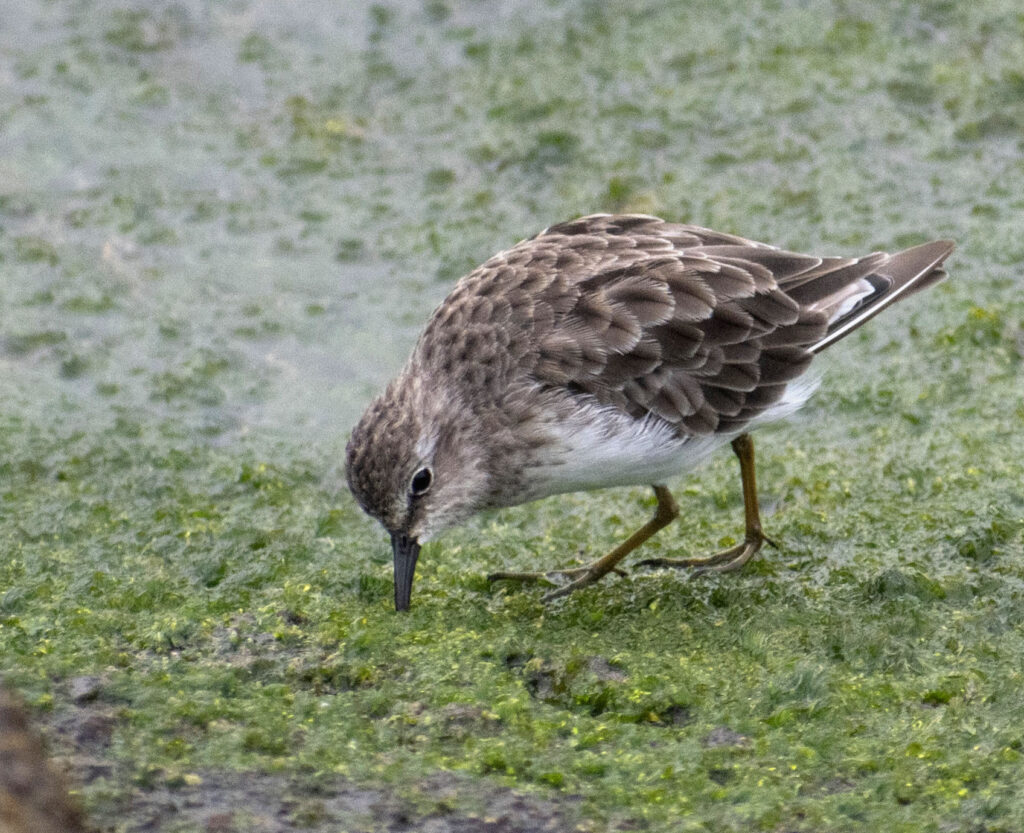By Grace Huffman

Migration is in full swing, with birds on their way south from their breeding grounds. From warblers to shorebirds, they are all headed to where they’ll spend the winter. One of the most common shorebirds migrating through is the Least Sandpiper.
Least Sandpipers are small, rather plain looking shorebirds belonging to the genus Caldaris. Collectively a lot of birds in this genus are referred to as “peeps.” They are all similar in size & coloration, with a few difficult field marks to tell each species apart. Least Sandpipers are no exception, although in good lighting the easiest way to tell them from other peeps are their yellow legs. They are a little brighter colored for the breeding season, but they are still largely brown with a white belly.
Despite being the smallest sandpipers in the world, Least Sandpipers have a very big range. They breed all the way up in Alaska & northern Canada, and winter in parts of northern South America. They nest in the tundra on the ground, with the male making several “scrapes” in the ground and the female choosing one of them to refine further and create a cup out of dried grass. The female lays her eggs and incubates them for around 3 weeks until the young hatch. The young are precocial, meaning they are able to move about and feed themselves shortly after hatching, but the male will often stay with them for some time to help keep predators at bay.
Here in Oklahoma they can be found most of the year, but they are the most common in migration and winter. If you want to see one, they are easily located anywhere from the lakeshore to a pond in a cattle field. Just give them a little bit of water or mud and a lot of shore, and they’re good to go! They are listed as Least Concern, but are declining somewhat, especially in the east. This is thought to be due to habitat loss on their migration & wintering grounds. Next time you’re out birding near water, take a close look at the shore for small sandpipers, and they might just be Leasts!
References: allaboutbirds.org.
